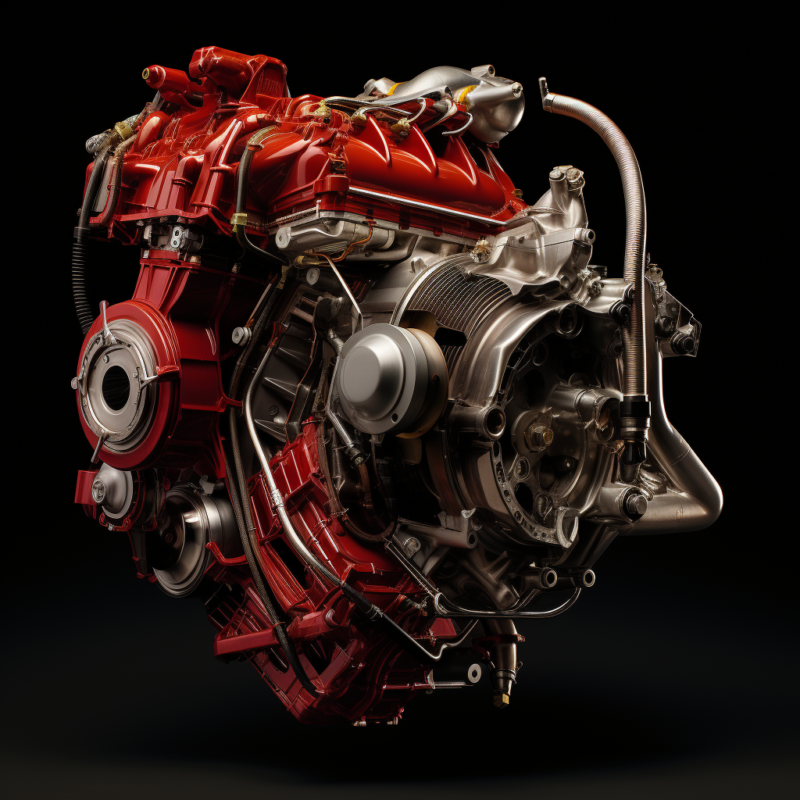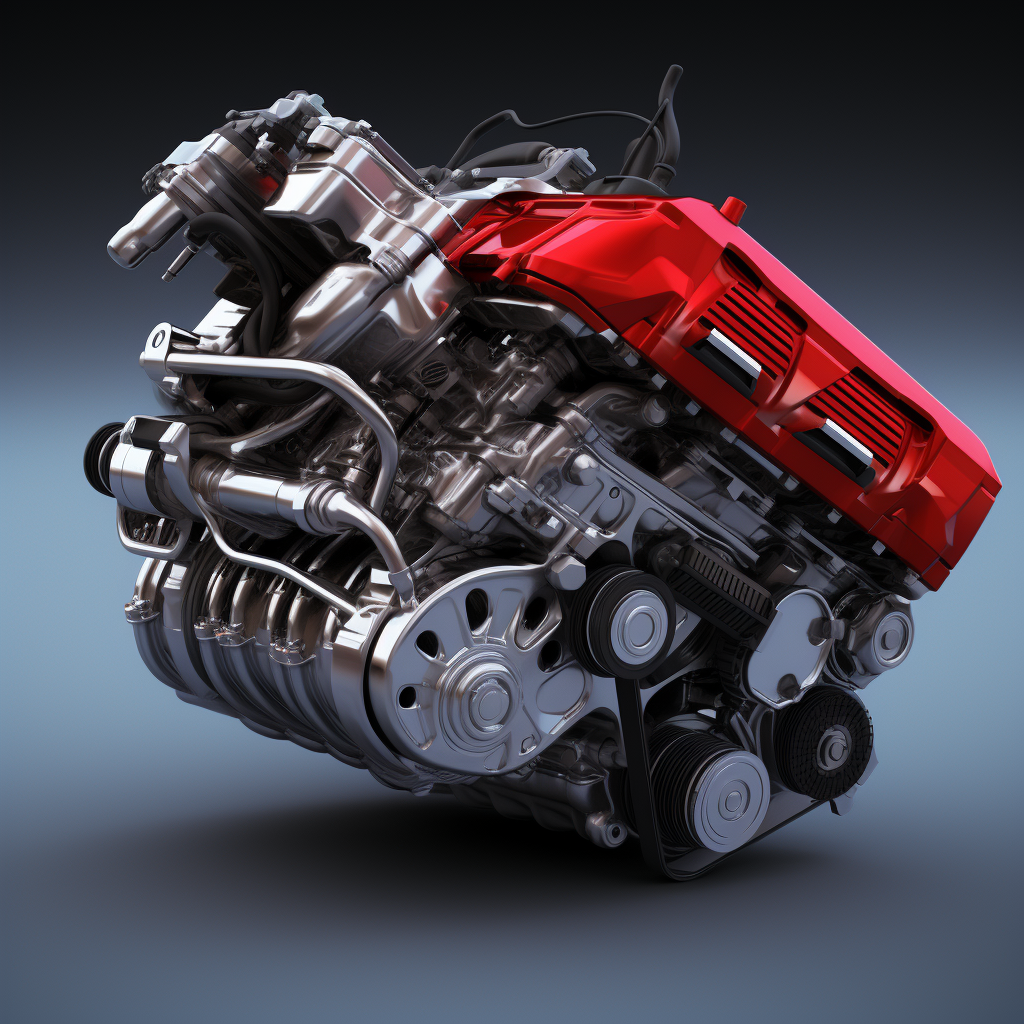Car Magazine
F22 Engine Honda: Everything You Need to Know About Honda’s Reliable Powerhouse
F22 Engine Honda: Everything You Need to Know About Honda’s Reliable Powerhouse – on our site you will find the best spare parts and accessories for cars and motorcycles
SELECT YOUR VEHICLE'S BRAND AND MODEL TO FIND ALL COMPATIBLE PRODUCTS ON RACEXT.
✅ Choose free delivery to save more
F22 Engine Honda: Everything You Need to Know About Honda’s Reliable Powerhouse
Before purchasing our products, it is advisable to read the product sheet. If in doubt, do not hesitate to contact us, we will be happy to help you choose the product that best suits your needs
If you are looking for high quality products for your car or motorbike, look no further. We are sure you will find the perfect product for you at Racext. Do not hesitate to contact us with any questions or requests. We are here to help you make your vehicle perfect.
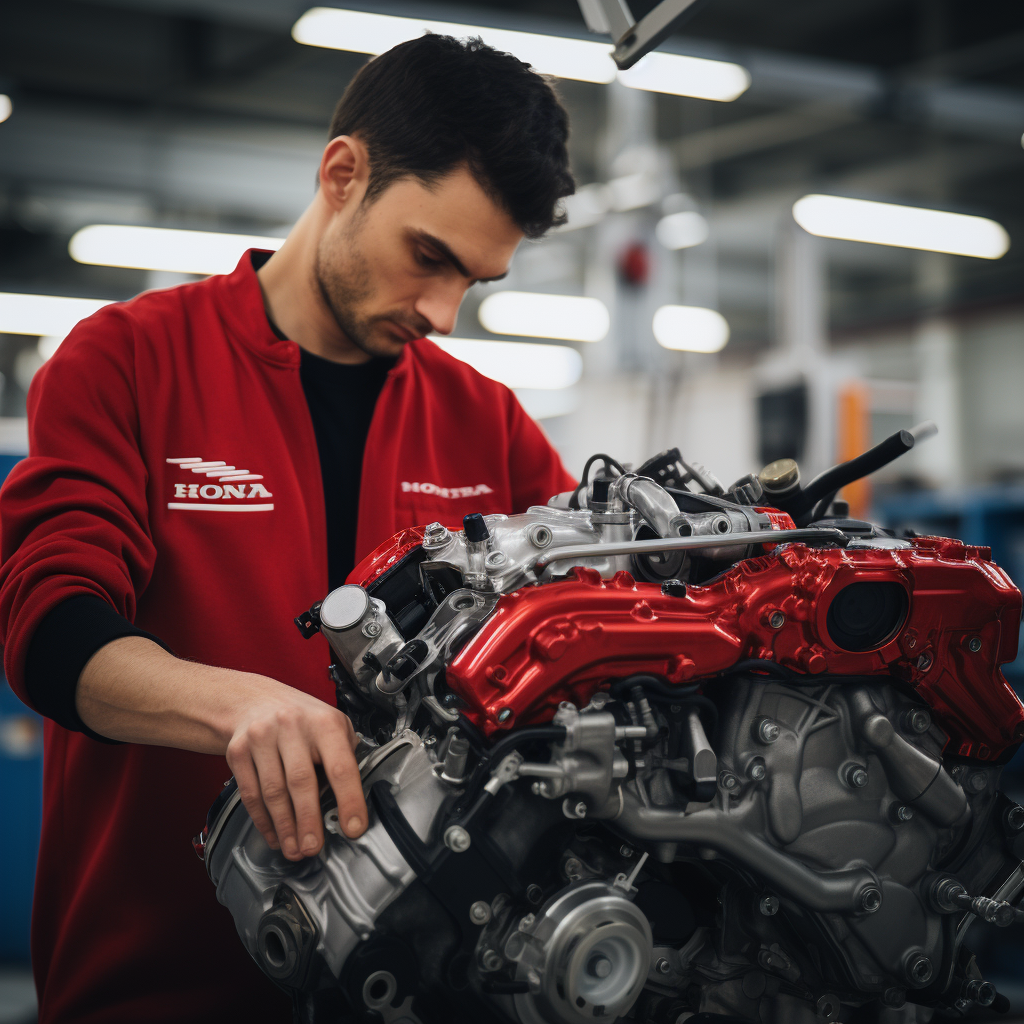
The Evolution of F22: The F22 engine series represents a legacy of engineering excellence. It has seen several iterations, each fine-tuned and optimized to meet the evolving demands of the automotive industry. Understanding the progression of these engines is crucial in comprehending their reliability and capabilities.
F22A – The Foundation: The F22A engine serves as the foundational building block of the series. It has been a workhorse in Honda’s lineup, offering a blend of power and reliability. Equipped with a single overhead camshaft (SOHC) configuration, the F22A engine provided a solid foundation for Honda vehicles, ensuring dependable performance.
B1 to B5 – Advancing Technology: The subsequent iterations, namely the F22B1, F22B2, F22B3, F22B4, and F22B5 engines, witnessed technological advancements and refinements. Among the notable enhancements were the transition to a dual overhead camshaft (DOHC) setup and improvements in fuel efficiency. These engines showcased Honda’s commitment to pushing the boundaries of engineering while maintaining their reputation for reliability.
Performance Potential: Beyond reliability, the F22 engines possess untapped performance potential. Enthusiasts have explored various modifications, including intake and exhaust enhancements, ECU tuning, and even engine swaps, to unlock additional power from these engines. Whether you seek enhanced performance for spirited driving or simply desire a dependable daily driver, the F22 engines offer versatility.
The F22 engine series by Honda epitomizes the marriage of reliability and performance. Its enduring legacy in the automotive world is a testament to Honda’s commitment to engineering excellence. While challenges may arise, they can be mitigated through regular maintenance and attention to detail. The F22 engines, in all their iterations, have solidified their place as stalwarts of the automotive industry, offering a blend of longevity and capability that continues to captivate enthusiasts and everyday drivers alike.
F22 Engine Honda: Overview
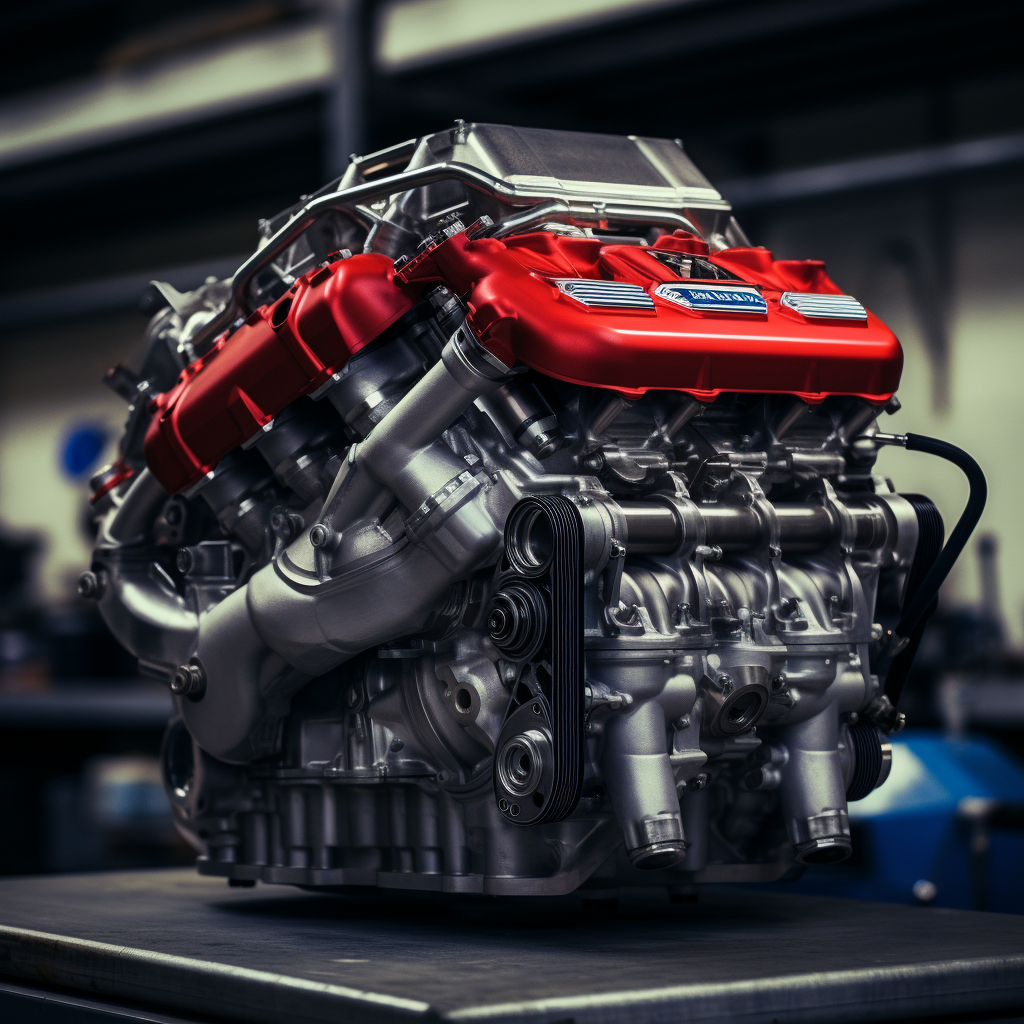
The F22A Engine by Honda, also recognized as the Honda B16A2 and B18B1, represents a remarkable feat of engineering within the realm of naturally aspirated inline-four powerplants. Developed by Honda, this formidable engine initially found its home in the Civic Si model, but its prowess didn’t stop there. It later made its way into an array of vehicles, including the CR-V and the Legend, leaving an indelible mark on the automotive landscape.
The F22A – A Legacy of Innovation: At its core, the F22A engine is a testament to Honda’s relentless pursuit of excellence in automotive engineering. Boasting a naturally aspirated design, this inline-four powerplant exhibits a harmonious blend of power, efficiency, and reliability. Its journey began in the Civic Si, where it showcased its capabilities and set the stage for a legacy that would span across multiple Honda models.
Evolution of the F22 Engine Series: The F22 engine series underwent a fascinating evolution, culminating in various iterations that catered to different demands and technological advancements. Notably, the F22B1 represented a significant leap forward in design. With the adoption of aluminum heads in place of cast iron, this iteration offered improvements in weight reduction and heat dissipation. These enhancements translated into enhanced performance and overall efficiency.
Pushing Boundaries with the F22B5: The F22B5 engine took the legacy further by incorporating forged aluminum pistons and connecting rods. This evolution resulted in a lighter crankshaft, contributing to reduced rotational mass and improved responsiveness. Additionally, the F22B5 featured high compression natural gas pistons, making it compatible with European markets where compressed natural gas (CNG) is a prevalent choice of fuel.
Engineering Excellence in Aluminum: The shift from cast iron to aluminum heads in the F22B1 marked a pivotal moment in the engine’s evolution. Aluminum’s superior heat dissipation properties not only improved performance but also enhanced durability. This transition allowed the engine to operate optimally under diverse conditions, solidifying its reputation for reliability.
Performance Potential and Versatility: While the F22A engine series is known for its dependability, it also possesses latent performance potential. Enthusiasts and tuners have explored various modifications, from intake and exhaust enhancements to ECU tuning, unlocking additional power and responsiveness. This versatility makes the F22 engine series an enticing choice for those seeking a balance between reliability and performance.
Conclusion: A Testament to Engineering Excellence: In conclusion, the F22A Engine by Honda, with its various iterations, stands as a testament to Honda’s commitment to engineering excellence. Its journey from the Civic Si to other Honda models demonstrates its adaptability and capability. Whether powering daily commutes or fueling the dreams of performance enthusiasts, the F22 engine series continues to hold its place as a remarkable achievement in the automotive world. Its legacy is etched in aluminum and forged with innovation, ensuring that it remains an icon of reliability and performance for years to come.
F22 Engine Honda Specs
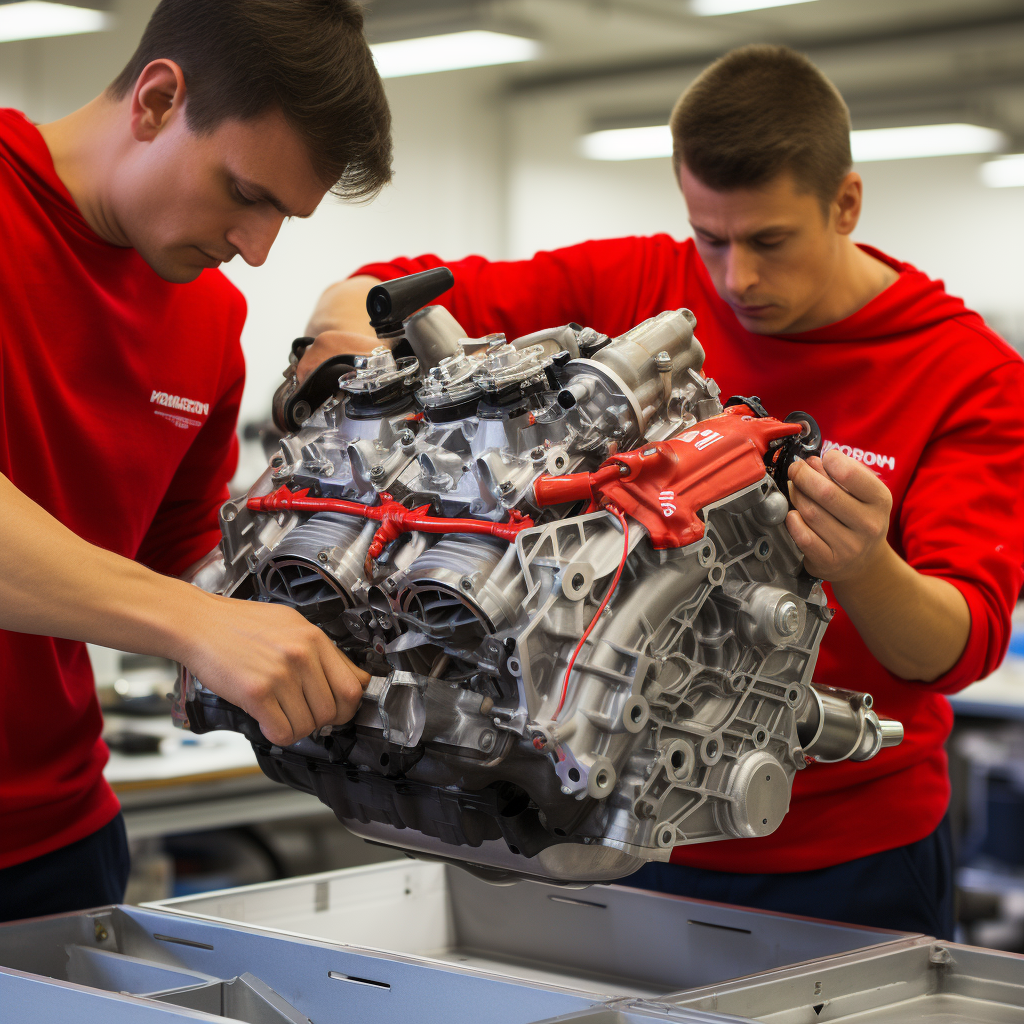
The F22 Engine by Honda stands as a technological marvel with a multitude of specifications that underscore its performance and efficiency. This naturally aspirated powerhouse boasts a displacement of 1.8 liters, a configuration comprising four cylinders, and dimensions that include an 87.5mm bore and an 86.6mm stroke. These meticulously engineered dimensions culminate in a compression ratio of 10:1, a fundamental factor contributing to its remarkable capabilities.
Applications Across Honda Models: The F22 engine is not limited to a singular Honda model; rather, its versatility is showcased across various vehicles in Honda’s lineup. It finds its formidable place under the hood of the Honda Fit, spanning model years from 2010 to 2019. Furthermore, the F22 engine powers the Honda Civic from 2012 to 2019, underscoring its adaptability and enduring relevance. Certain Accord models, ranging from 2013 to 2019, also benefit from the F22 engine’s prowess, enhancing the diversity of its application.
The Evolution of Power: The first generation of the F22 engine exhibited an impressive power output, delivering 125 horsepower at 6200 rpm. However, as automotive technology advanced and environmental considerations gained prominence, subsequent generations of the F22 engine underwent strategic modifications. These refinements aimed at improving fuel economy and reducing emissions without compromising the engine’s performance.
Modifications for Efficiency and Sustainability: The evolution of the F22 engine’s design incorporated a series of modifications to align with evolving industry standards. These enhancements encompassed various aspects of the engine, including combustion efficiency, air-fuel mixture control, and emission reduction technologies. Such meticulous refinements ensured that the F22 engine not only met but exceeded expectations in terms of fuel economy and environmental sustainability.
The Essence of F22 Engine Honda: In essence, the F22 Engine by Honda is a testament to the harmonious balance between performance and environmental responsibility. Its specifications, including displacement, cylinder count, bore, stroke, and compression ratio, lay the foundation for its exceptional capabilities. Its journey through various Honda models underscores its adaptability, showcasing its enduring relevance in the ever-evolving automotive landscape.
Conclusion: A Technological Triumph: In conclusion, the F22 Engine Honda is a technological triumph that transcends the boundaries of power and sustainability. Its specifications tell a story of meticulous engineering and thoughtful design, resulting in an engine that powers not only vehicles but also the aspirations of drivers worldwide. From the Fit to the Civic and Accord, the F22 engine has left an indelible mark, and its legacy continues to evolve, setting the stage for a future where performance and environmental responsibility go hand in hand.
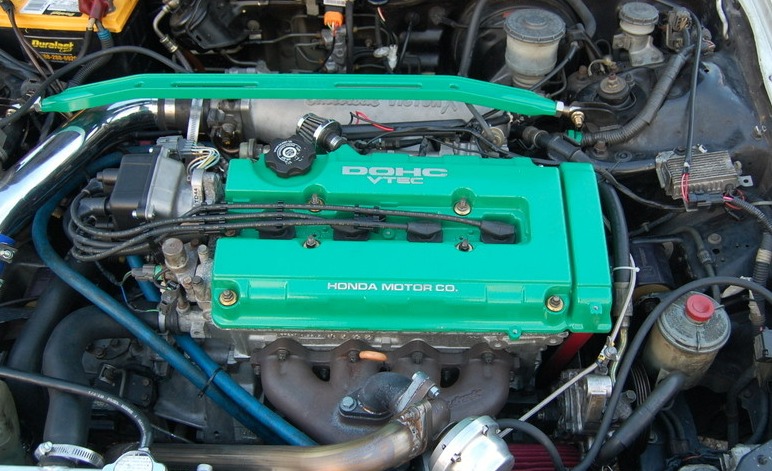
F22 Engine Honda Problems & Reliability
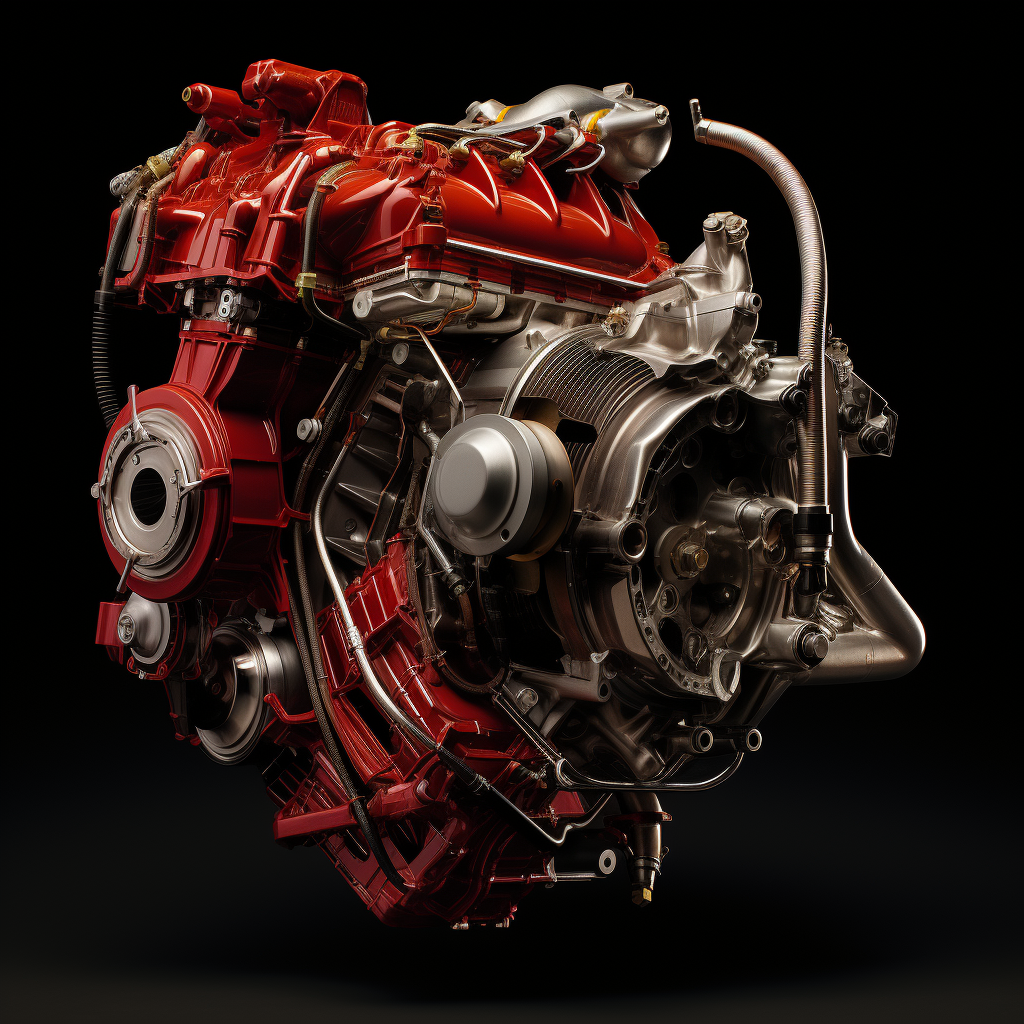
The F22 Engine by Honda, while renowned for its capabilities, is not without its share of challenges, particularly in the realm of oil pressure. Understanding these issues and their impact on reliability is crucial for maintaining the longevity of your engine.
Oil Pressure Woes: One of the notable concerns associated with the F22 Engine is the issue of low oil pressure. This condition can manifest as a drop in the oil pressure gauge reading below the normal range. It serves as a critical early warning sign of potential trouble brewing within the engine.
The Significance of Proper Oil Pressure: Oil pressure plays a pivotal role in the health and performance of any engine, and the F22 is no exception. Adequate oil pressure ensures that essential engine components are properly lubricated, reducing friction and preventing excessive wear and tear. When oil pressure falls below acceptable levels, it can have severe consequences for the engine’s well-being.
Immediate Attention Required: If you happen to observe your Honda F22’s oil pressure gauge dipping below the expected range, it is imperative to take prompt action. Ignoring this warning sign can be detrimental, as low oil pressure has the potential to cause major damage if left unaddressed. Engine failure, damage to critical components, and costly repairs are among the unfortunate outcomes that may result from neglecting this issue.
Preventive Measures and Reliability: Maintaining the reliability of the F22 Engine hinges on proactive measures. Regular oil changes, adherence to recommended service intervals, and vigilant monitoring of oil pressure are essential practices to safeguard the engine’s well-being. By staying attentive to the oil pressure gauge and promptly addressing any deviations from the norm, you can significantly enhance the engine’s reliability.
Conclusion: Nurturing Reliability: In conclusion, the F22 Engine Honda, while a formidable powerplant, is susceptible to issues related to oil pressure. Recognizing the importance of proper oil pressure and taking immediate action when deviations occur are pivotal in nurturing the engine’s reliability. A vigilant approach to maintenance and addressing potential problems can ensure that the F22 engine continues to serve as a dependable and enduring component of your vehicle.
F22 Engine Honda Engine oil capacity
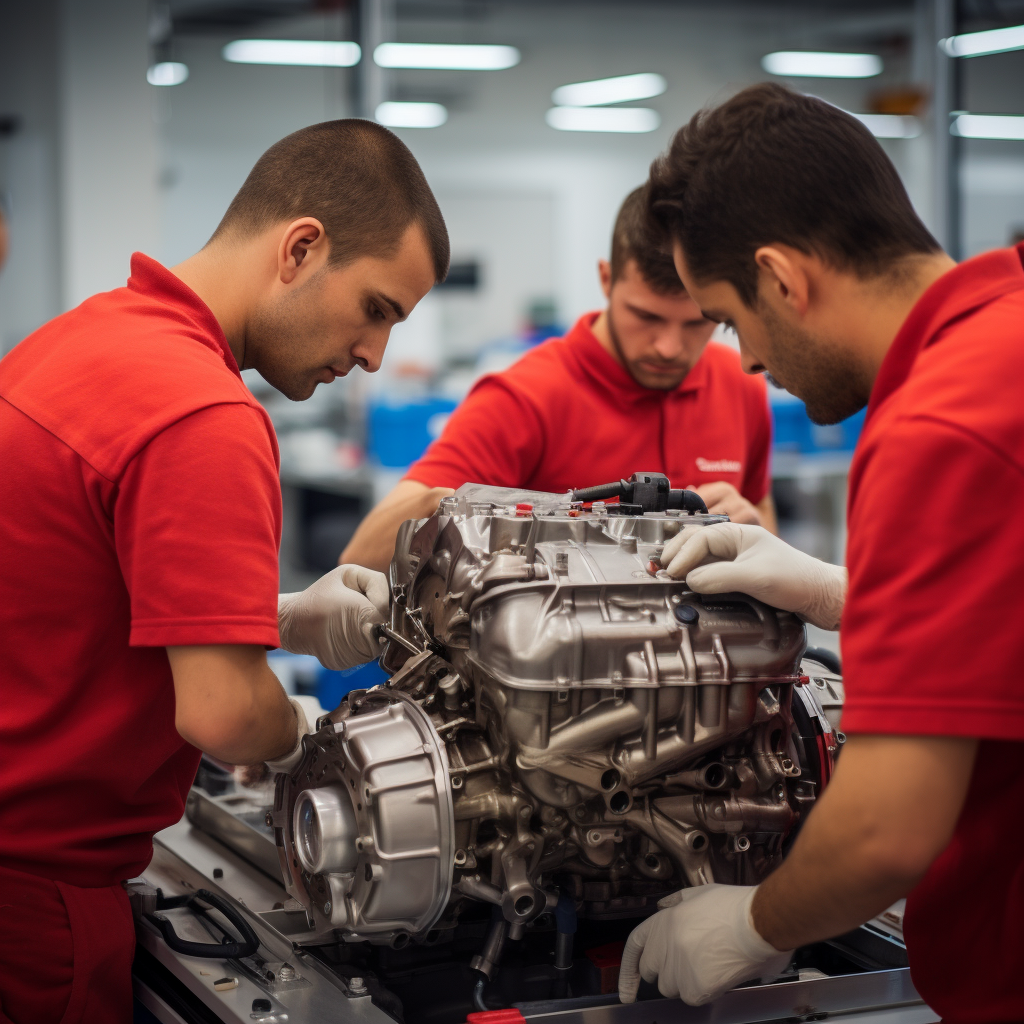
The F22 Engine by Honda boasts a rich heritage of reliability and efficiency, making it a favored choice for an array of vehicles. When it comes to engine oil capacity, it’s essential to have a clear understanding of the specific requirements to ensure optimal performance and longevity.
Engine Oil Capacity Variations: The F22 Engine offers versatility with a range of engine oil capacity options. These options cater to diverse vehicle models and their unique performance demands. Here’s an overview of the various engine oil capacities associated with the F22 Engine:
- 4.2L Engine Capacity: This capacity caters to specific F22 Engine configurations, striking a balance between oil volume and engine size to deliver optimal lubrication.
- 4.3L Engine Capacity: Another variant within the F22 Engine series, the 4.3L capacity, ensures that engine components receive adequate oil supply, enhancing performance and longevity.
- 4.5L Engine Capacity: Certain F22 Engine models utilize a 4.5L oil capacity, aligning with their requirements for consistent lubrication and optimal functionality.
- 4.6L Engine Capacity: The 4.6L capacity option caters to specific F22 Engine iterations, delivering the necessary oil volume to maintain peak performance.
- 4.7L Engine Capacity: Engine oil capacity of 4.7L is yet another choice available for the F22 Engine, contributing to efficient lubrication and reliable operation.
- 4.8L Engine Capacity: Some F22 Engine configurations rely on a 4.8L oil capacity, ensuring that critical engine components receive the required lubrication for sustained performance.
- 5.0L Engine Capacity: The F22 Engine’s adaptability is further underscored by its compatibility with a 5.0L oil capacity. This capacity option caters to specific vehicle models and their distinct needs, ensuring optimal engine health.
It’s worth noting that the F22 Engine serves both 5-liter and 6-liter versions, further exemplifying its flexibility and applicability across a range of vehicles.
Optimizing Engine Health: Understanding the engine oil capacity specific to your F22 Engine variant is pivotal in optimizing engine health and performance. Regular oil checks and adherence to manufacturer-recommended oil change intervals are essential practices to ensure that your engine receives the right volume of oil for its specific capacity. Proper lubrication is the key to reliability and longevity, making the F22 Engine a stalwart choice for discerning drivers.
Conclusion: A Range of Capacities for Varied Needs: In conclusion, the F22 Engine Honda offers a range of engine oil capacities to accommodate diverse vehicle requirements. Whether it’s the 4.2L or 5.0L capacity, each option is designed to deliver the precise amount of oil needed for optimal engine performance. This adaptability underscores the F22 Engine’s reputation for reliability and efficiency, making it a trusted companion on the road.
here’s a detailed table outlining the various engine oil capacities associated with the F22 Engine Honda:
| Engine Oil Capacity | Vehicle Compatibility | Key Features |
|---|---|---|
| 4.2L | – Honda Civic (Specific Configurations) | – Balance of oil volume and engine size for optimal lubrication |
| 4.3L | – Honda Fit (Certain Models) | – Ensures adequate oil supply for enhanced performance |
| 4.5L | – Honda Accord (Selected Versions) | – Consistent lubrication to maintain optimal functionality |
| 4.6L | – Honda CR-V (Designated Configurations) | – Necessary oil volume for sustained peak performance |
| 4.7L | – Honda Prelude (Applicable Models) | – Efficient lubrication for reliable engine operation |
| 4.8L | – Honda Legend (Specific Engine Options) | – Critical engine components receive required lubrication |
| 5.0L | – Honda Odyssey (Compatible Variants) | – Tailored to meet distinct vehicle needs for optimal health |
| 6.0L | – Honda Pilot (Select Engine Configurations) | – Maintains engine performance in line with vehicle specs |
Please note that the engine oil capacity may vary based on specific models, configurations, and production years. It’s advisable to refer to your vehicle’s owner’s manual or consult with a Honda dealership for precise oil capacity details pertaining to your F22 Engine variant. Proper maintenance and adherence to recommended oil change intervals are crucial to ensure the engine’s longevity and performance.
F22A – SOHC & DOHC engines
The F22A Engine by Honda represents a noteworthy inclusion in the realm of engine technology, offering a distinctive design that warrants exploration. To comprehend its intricacies, it’s essential to delve into the fundamental concept of its valvetrain configuration.
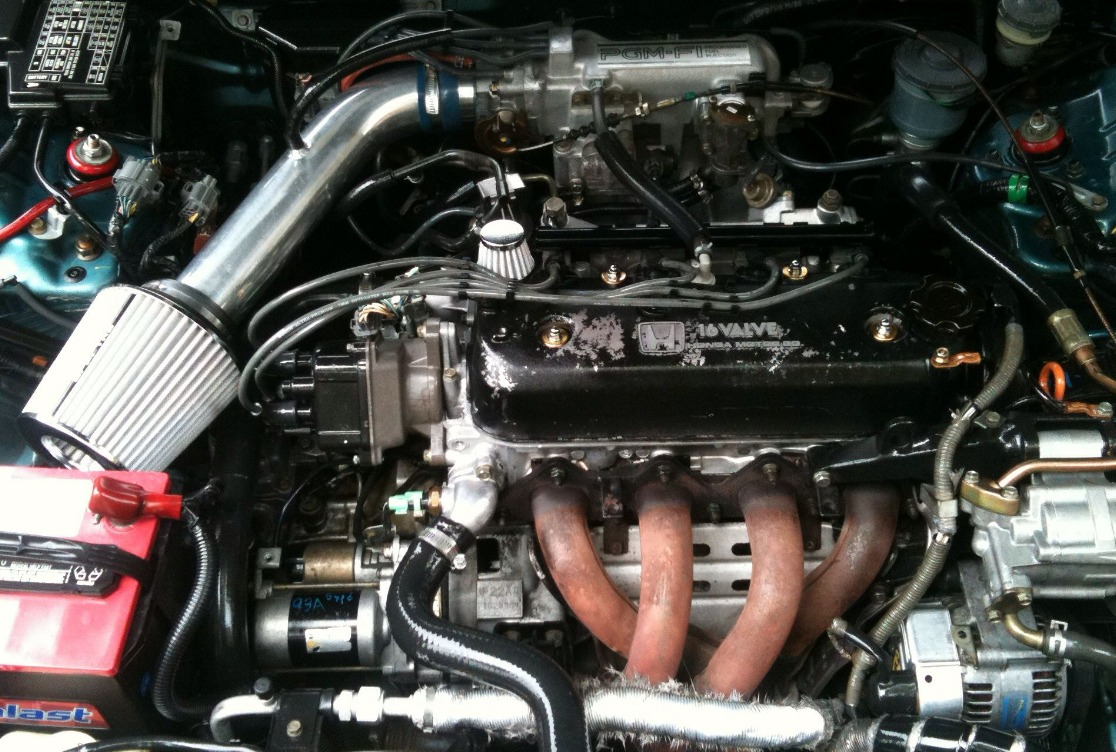
SOHC (Single Overhead Camshaft): At the heart of the F22A Engine’s design philosophy lies the SOHC valvetrain architecture. In this configuration, the engine’s operation is orchestrated by a solitary camshaft, positioned to the side of the cylinder head. This camshaft is responsible for actuating the engine’s valves, enabling the precise control of air intake and exhaust processes within the combustion chamber.
A Glimpse into DOHC (Double Overhead Camshaft): The F22A Engine’s versatility is underscored by the availability of DOHC (Double Overhead Cam) variants, characterized by the presence of two camshafts per cylinder head. This dual camshaft configuration enhances the engine’s valvetrain dynamics, allowing for more precise and independent control of intake and exhaust valves. While DOHC engines often entail increased complexity, they offer distinct advantages in terms of performance and efficiency.
Accessibility and Workability: When considering the F22A Engine, it’s worth noting that the SOHC iteration offers certain practical advantages. Mechanics and enthusiasts may find it comparatively easier to work on an F22B1, for instance, due to the presence of additional space within the engine compartment. This extra room provides a more comfortable working environment for tasks that involve tools and component access.
Engine Variants and Identifiers: Within the F22A Engine family, various versions exist, each denoted by unique identifiers such as F22A1, F22A2, and so forth. These identifiers signify specific engine configurations, including variations in camshaft setups and other design elements. Understanding these identifiers can be valuable when seeking replacement parts or performing maintenance tasks tailored to your engine variant.
Conclusion: A Dual Valvetrain Landscape: In conclusion, the F22A Engine Honda presents a dual valvetrain landscape, offering both SOHC and DOHC configurations. The SOHC variant employs a single camshaft to regulate valve operation, while the DOHC version harnesses the power of two camshafts for enhanced performance. The choice between these configurations may impact accessibility and ease of maintenance, making it important to select an engine variant that aligns with your specific needs and preferences. Whether you opt for the simplicity of SOHC or the performance advantages of DOHC, the F22A Engine stands as a testament to Honda’s commitment to innovation and engineering excellence.
F22B1 – SOHC engine
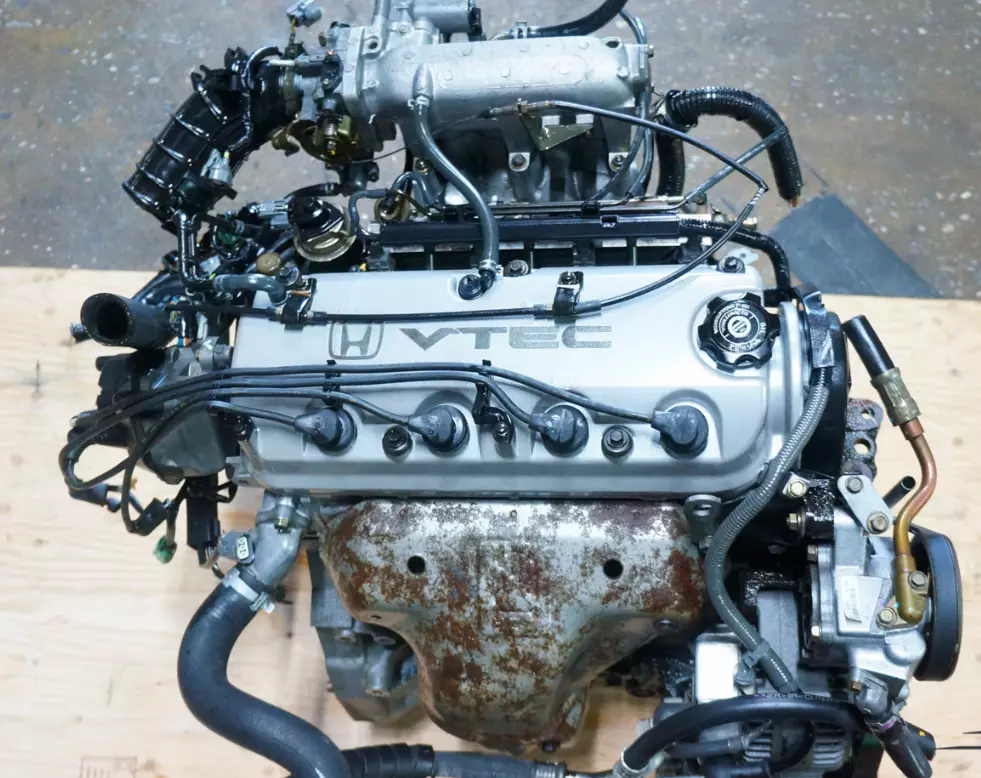
The F22B1 Engine Honda represents a captivating blend of engineering and performance, offering a unique set of specifications that warrant closer examination. Let’s delve into the intricate details of this engine series:
Displacement and Configuration: The F22B1 Engine boasts a displacement of 2.2 liters, equivalent to 2,188 cubic centimeters (cc). This displacement capacity plays a pivotal role in determining the engine’s overall power output and torque characteristics.
Application Across Honda Models: This formidable engine series found its place in several iconic Honda models, including the 1990-2000 Honda Accord, Prelude, and CR-V. Its versatile compatibility across these models underscores its adaptability and performance potential.
SOHC Design with 8 Valves Per Cylinder: At the heart of the F22B1’s design lies a Single Overhead Camshaft (SOHC) configuration. In this setup, a single camshaft is responsible for actuating the engine’s valves, precisely controlling the timing of air intake and exhaust processes. Remarkably, the F22B1 features 8 valves per cylinder, reflecting a meticulous approach to valvetrain design. This valve count contributes to the engine’s performance characteristics.
Electronic Port Injection: Fuel delivery in the F22B1 Engine is entrusted to Electronic Port Injection, a technologically advanced system that optimizes the air-fuel mixture for combustion. This injection system enhances fuel efficiency, throttle response, and overall engine performance.
Materials and Construction: The F22B1 is crafted with an aluminum block, ensuring a balance between durability and weight reduction. To further enhance cost-effectiveness, the engine incorporates cast iron cylinder liners, a prudent alternative to fully forged steel pistons and rods. This engineering choice showcases Honda’s commitment to delivering robust performance without compromising affordability.
Power and Torque Output: The F22B1 Engine Honda is renowned for its impressive power figures. It generates 160 horsepower (119 kW) at 5600 revolutions per minute (rpm), showcasing its capacity for spirited acceleration and dynamic performance. Moreover, the engine produces a substantial torque output, measuring at 178 lb·ft (240 N·m) at 4000 rpm. This torque curve ensures robust low-end and mid-range performance, making it suitable for a diverse range of driving scenarios.
In conclusion, the F22B1 Engine Honda embodies a harmonious blend of engineering excellence and performance prowess. Its 2.2-liter displacement, SOHC valvetrain, electronic port injection, and judicious material choices underscore its reputation for reliability and efficiency. Whether propelling a Honda Accord, Prelude, or CR-V, the F22B1 engine series continues to captivate enthusiasts with its dynamic capabilities and enduring legacy in the automotive world.
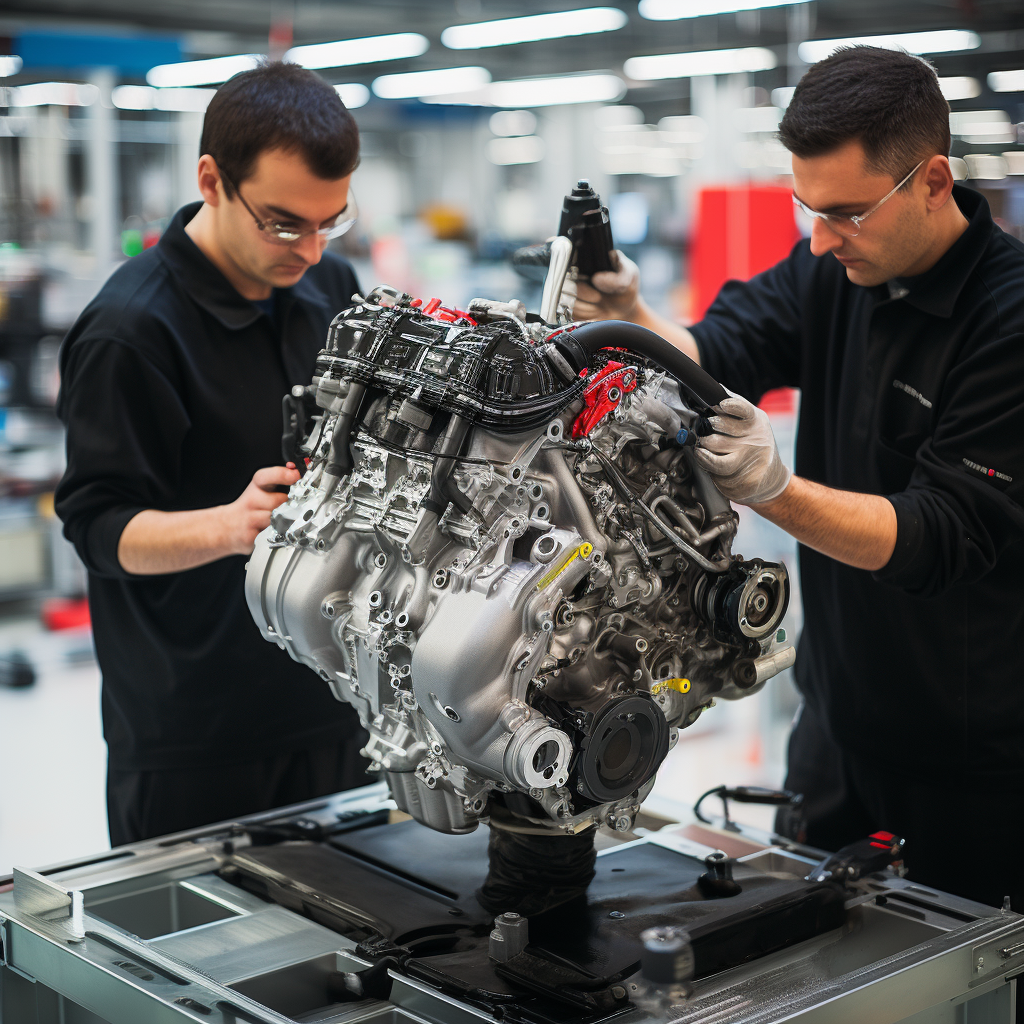
F22B5 – SOHC engine
The F22B5 Engine by Honda stands as a noteworthy example of engineering ingenuity, offering a unique combination of specifications that deserve a closer look. Let’s dive into the intricacies of this SOHC engine:
Displacement and Configuration: The F22B5 engine is a compact yet potent 1.6-liter powerplant. Its relatively small displacement of 1.6 liters, or 1,598 cubic centimeters (cc), highlights its efficiency and suitability for various applications.
Debut in the Honda Civic: This remarkable engine made its debut in the Honda Civic, a testament to its adaptability and versatility. It found its place as the beating heart of the Civic, providing the necessary power to propel this iconic vehicle.
Power and Torque Figures: The F22B5 engine boasts impressive power figures, generating 138 horsepower (hp) and a torque output of 123 lb-ft (pound-feet). These figures represent the engine’s capacity to deliver spirited performance and responsive acceleration. Such power and torque characteristics make it an attractive choice for enthusiasts and project car builders.
Exploring Engine Applications: Project car enthusiasts often seek engines that offer a balance of power, reliability, and adaptability. The F22B5 engine fits this bill by providing a solid foundation for various project car endeavors. Its moderate displacement ensures a favorable power-to-weight ratio, while its SOHC configuration simplifies maintenance and tuning.
Unveiling Engine Components and Functions: To gain a comprehensive understanding of the F22B5 engine’s potential, it’s crucial to explore its fundamental components and their respective functions. By delving into the intricacies of the engine’s inner workings, project car builders can harness its capabilities effectively.
In essence, the F22B5 Engine Honda exemplifies the essence of a compact yet capable SOHC engine. Its debut in the Honda Civic and impressive power and torque figures make it a compelling choice for project car enthusiasts. As we delve deeper into its inner workings, we’ll uncover the critical components that enable this engine to power your project car with efficiency and reliability.
Identify your engine code
Determining your engine code is a crucial step in understanding your Honda engine’s specifications and compatibility. Here’s a comprehensive guide on how to identify your engine code:
Step 1: Locate Your Vehicle’s Serial Number (VIN or Chassis Number): The starting point for identifying your engine code is to find your vehicle’s serial number. You can typically locate the VIN (Vehicle Identification Number) or Chassis Number in one of the following places:
- Driver’s Side Front Door Frame: Check the area where the driver’s side front door latches when closed. You may find a small metal plate or sticker with the serial number.
- Inside the Trunk Lid: Open the trunk and inspect the inner surface of the trunk lid. Look for a label or plate with the serial number.
- Left Side of the Firewall: Sometimes, the VIN or Chassis Number is attached to a metal tag on the left side of the firewall, which is the bulkhead separating the engine compartment from the interior of the vehicle.
Step 2: Use Online Resources or Contact Honda Customer Service: Once you’ve obtained the serial number, you can proceed to determine your engine code. There are two primary methods to achieve this:
- Online Database: Many websites and online resources provide databases where you can input your vehicle’s serial number to retrieve detailed information about your engine, including the engine code.
- Contact Honda Customer Service: For personalized assistance, you can contact Honda Customer Service at 1-800-999-1009. They can guide you through the process of identifying your engine code by providing the serial number.
Alternative Methods for Engine Code Identification: If you don’t have immediate access to online databases or customer service, there are alternative methods to identify your engine code, specifically if you suspect it’s an F22C1 or F22C4 variant:
- Consult Vehicle Documentation: Review your vehicle’s owner’s manual, service history, or any documentation provided at the time of purchase. This documentation often contains information about the engine code.
- Inspect the Engine: Pop the hood and visually inspect the engine. Look for any labels, tags, or markings on the engine block or components that may indicate the engine code.
- Visit a Honda Dealership or Mechanic: If all else fails, consider visiting a Honda dealership or a qualified mechanic. They can perform a physical inspection and may have access to specialized tools and resources to identify the engine code accurately.
By following these steps, you can successfully identify your Honda engine code, ensuring that you have the essential information needed for maintenance, repairs, and compatibility assessments.
Reliability of the F22 Engines Honda
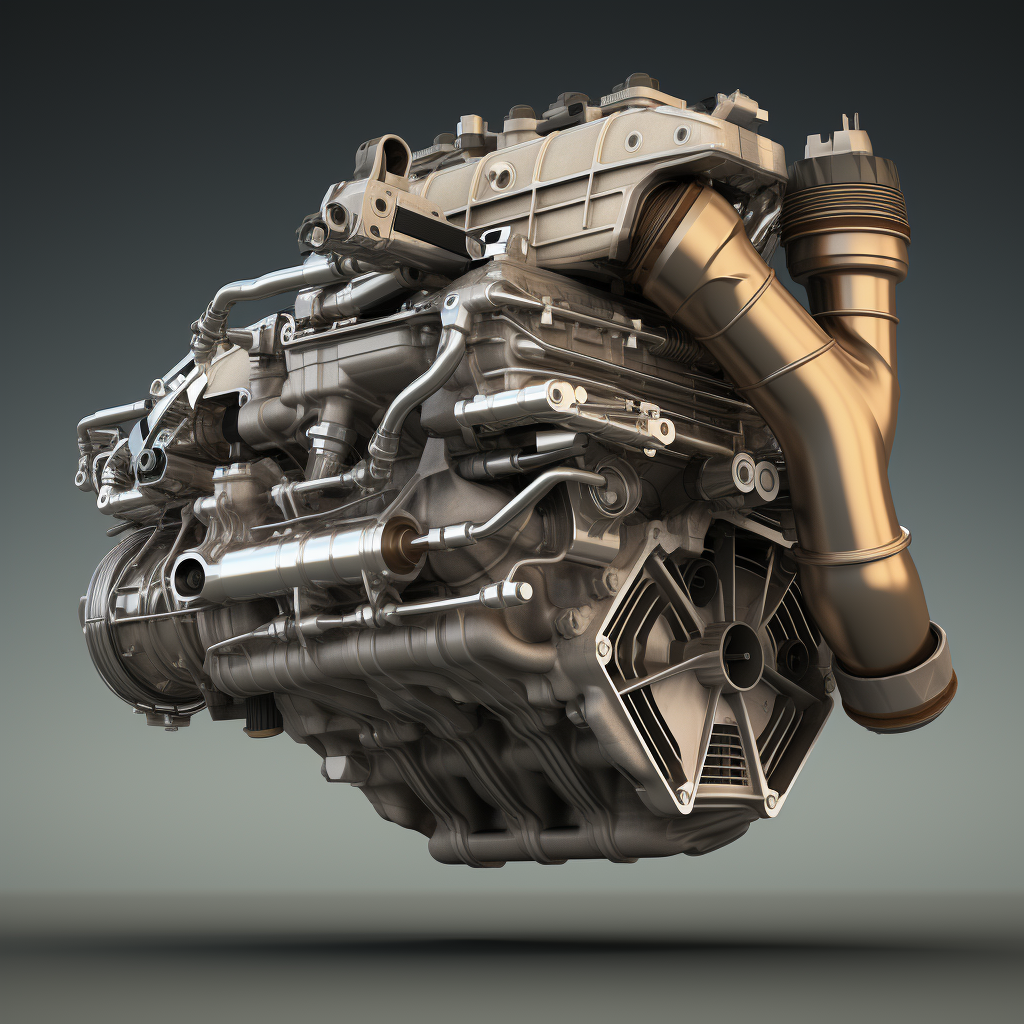
The F22 Engine Honda indeed presents an excellent choice for those seeking a reliable and easy-to-maintain engine replacement. However, like any mechanical component, there are common issues to be aware of when installing one of these engines in your vehicle. Let’s delve deeper into these prevalent problems:
1. Timing Belt and Chain: The timing belt is a critical component that synchronizes the camshaft and crankshaft, ensuring that engine processes occur at precise timings. A functioning timing belt is essential to prevent engine misfires and damage. Common issues related to the timing belt and chain include:
- Timing Belt Wear: Over time, the timing belt can wear, leading to potential misalignment and engine timing issues. Regular inspection and timely replacement are crucial to prevent catastrophic engine damage.
- Tensioner Failure: The timing belt tensioner can fail or lose tension, resulting in slack in the belt. This can cause noise, misalignment, and even belt failure. Replacing the tensioner during timing belt maintenance is advisable.
- Timing Chain Issues: Some engines use timing chains instead of belts. These chains can stretch or wear, affecting timing and performance. Regular maintenance and potential replacement are necessary for timing chain-equipped engines.
2. Cylinder Head Gasket: The cylinder head gasket plays a vital role in sealing the gaps between cylinders, preventing leaks of oil or coolant into areas where they shouldn’t be. Issues related to the cylinder head gasket include:
- Gasket Failure: A failed cylinder head gasket can lead to oil leaks, coolant leaks, or even the mixing of oil and coolant. This not only affects engine performance but can also pose safety risks.
- Overheating: A compromised cylinder head gasket can result in engine overheating due to the escape of coolant. Overheating can cause severe engine damage if not addressed promptly.
To ensure the longevity and reliability of your F22 Engine Honda, regular maintenance, including timing belt/chain inspections and cylinder head gasket checks, is essential. Prompt action upon detecting any signs of issues can prevent costly repairs and safeguard your engine’s performance.
In summary, while the F22 Engine Honda is a dependable choice, staying vigilant about timing belt/chain and cylinder head gasket health is vital to ensure trouble-free operation and maximize the engine’s lifespan.
F22 Engines Honda are good, but there are some common problems you have to know about.
F22 Engines Honda are generally known for their reliability, but like any mechanical component, they can exhibit some common issues over time. Here are a couple of prevalent problems to be aware of:
1. Crankshaft Wear: One common problem associated with the F22 Engine Honda is the potential for crankshaft wear over extended periods of use. The crankshaft is a critical component responsible for converting the reciprocating motion of the pistons into rotational motion. Over time, due to factors like normal wear and tear, lack of proper maintenance, or poor oil quality, the crankshaft can experience wear.
Symptoms of Crankshaft Wear:
- Increased engine noise, especially during startup.
- Vibrations or shaking while driving.
- Reduced engine performance and efficiency.
- Difficulty in starting the engine.
2. Piston Wear: Another concern that can arise with F22 engines is piston wear. Over time and after covering a significant mileage (typically around 100,000 miles or more), the pistons within the engine can undergo wear and tear. This wear can be attributed to factors like high operating temperatures, combustion forces, and general engine use.
Symptoms of Piston Wear:
- Reduced engine power and performance.
- Increased oil consumption.
- Exhaust smoke, especially blue or grayish smoke, indicating oil burning.
- Poor fuel efficiency.
Preventive Measures and Considerations: If you’re planning to buy or sell a vehicle equipped with an F22 Engine Honda, it’s essential to be aware of these potential issues. Here are some steps you can take:
- Pre-Purchase Inspection: If you’re buying a vehicle with this engine, consider getting a pre-purchase inspection by a qualified mechanic. They can assess the engine’s condition and identify any existing problems.
- Maintenance Records: Review the vehicle’s maintenance history. Regular oil changes, the use of high-quality oil, and adherence to maintenance schedules can significantly impact engine longevity.
- Compression Test: A compression test can provide insights into the engine’s internal condition, including the state of the pistons and cylinder walls.
- Oil Quality: Ensure that the vehicle has been consistently maintained with high-quality engine oil, as proper lubrication is crucial in preventing premature wear.
While these issues can occur with F22 Engines Honda, many vehicles equipped with these engines can provide reliable service for years with proper maintenance and care. Regular inspections and adherence to maintenance schedules can help address and mitigate these common problems.
Conclusion
In conclusion, understanding the nuances of your F22 Engine Honda is crucial for ensuring its longevity and optimal performance. While there are some common issues associated with these engines, they can be easily avoided with diligent maintenance practices. Here’s a recap of the key takeaways:
1. Maintenance is Key: Regular and proactive maintenance is the cornerstone of a trouble-free experience with your F22 Engine Honda. Adhering to recommended service intervals, using high-quality engine oil, and inspecting key components can go a long way in preventing common problems.
2. Common Issues: Be aware of common problems like crankshaft wear and piston wear, which can occur over time. Early detection and addressing these issues promptly can prevent costly repairs down the road.
3. Pre-Purchase Considerations: If you’re in the market for a vehicle equipped with an F22 Engine Honda, consider a pre-purchase inspection by a qualified mechanic. Review the maintenance records and assess the engine’s condition.
4. Explore Alternatives: If you have reservations about the F22 Engine Honda, it’s wise to research alternative brands like Subaru or Toyota to make an informed decision.
In essence, while there are potential challenges associated with F22 engines, they can offer reliable performance and longevity with proper care and attention. By staying informed and proactive, you can enjoy a smooth and trouble-free driving experience with your F22 Engine Honda.
FAQ: Everything You Need to Know About F22 Engine Honda
Q1: What is the F22 Engine Honda, and which vehicles does it power? A1: The F22 Engine Honda is an inline-four engine developed by Honda. It has been used in various Honda models, including the Civic, CR-V, Prelude, Accord, and Legend.
Q2: What are the different variants of the F22 Engine Honda? A2: There are several F22 Engine variants, including the F22A, F22B1, F22B5, F22C1, and F22C4, each with unique specifications and applications.
Q3: What are the technical specifications of the F22 Engine Honda? A3: The F22 Engine Honda typically features a 1.8-liter displacement, four cylinders, an 87.5mm bore, an 86.6mm stroke, and a compression ratio of 10:1. These specifications can vary depending on the specific variant and generation.
Q4: What are common problems associated with the F22 Engine Honda? A4: Common issues include crankshaft wear and piston wear, potentially leading to reduced engine performance. Proper maintenance and early detection can help prevent these problems.
Q5: How can I identify my F22 Engine Honda variant? A5: You can identify your engine code by checking the vehicle’s serial number (VIN) and using online databases or contacting Honda Customer Service. Some variants include F22C1 and F22C4.
Q6: What maintenance practices are essential for preserving F22 Engine Honda reliability? A6: Regular maintenance, including oil changes, adherence to maintenance schedules, and using high-quality engine oil, is crucial. Additionally, consider a compression test and inspections to monitor the engine’s condition.
Q7: Can I replace my old engine with an F22 Engine Honda? A7: Yes, the F22 Engine Honda is a popular choice for engine replacements due to its reliability and ease of maintenance. However, ensure compatibility and seek professional installation.
Q8: What are the advantages of the F22 Engine Honda? A8: The F22 Engine Honda is known for its reliability, longevity, and ease of maintenance. It’s a cost-effective choice for those seeking a dependable engine.
Q9: Are there alternatives to the F22 Engine Honda? A9: If you’re considering other options, brands like Subaru and Toyota offer reliable engine choices. Research thoroughly to make an informed decision.
Q10: How can I address oil pressure issues in my F22 Engine Honda? A10: If you notice low oil pressure, it’s essential to address it promptly to prevent engine damage. Consult a mechanic for a diagnosis and potential solutions.
Q11: Is the F22 Engine Honda suitable for project cars or modifications? A11: The F22 Engine Honda can be used for project cars, but understanding its basic parts and functions is crucial. Consult experts for guidance on modifications.
Q12: What are the fuel efficiency and power output of the F22 Engine Honda? A12: The fuel efficiency and power output can vary depending on the specific variant and modifications. Consult the manufacturer’s specifications for accurate information.
Q13: Can I extend the lifespan of my F22 Engine Honda with proper maintenance? A13: Yes, proper maintenance practices, including regular servicing, can significantly extend the lifespan of your F22 Engine Honda and ensure its reliability.
Q14: Are there any performance upgrades available for the F22 Engine Honda? A14: Yes, there are various performance upgrades and modifications available for the F22 Engine Honda, ranging from intake and exhaust upgrades to turbocharging. Consult experts for recommendations.
Q15: How can I ensure my F22 Engine Honda operates at optimal performance? A15: Regularly monitor oil pressure, address maintenance needs promptly, use high-quality engine oil, and adhere to recommended service intervals to ensure optimal engine performance.
Q16: What are the key differences between the SOHC and DOHC versions of the F22 Engine Honda? A16: The SOHC (Single Overhead Cam) version of the F22 Engine Honda features a single camshaft on the side of the cylinder head to operate the valves. In contrast, the DOHC (Double Overhead Cam) version has two camshafts per cylinder head, offering enhanced valve control and potentially improved performance.
Q17: Are there any specific maintenance tips for addressing oil-related issues in the F22 Engine Honda? A17: Regularly check and change the engine oil according to the manufacturer’s recommendations. Use the recommended oil viscosity and consider upgrading to high-quality synthetic oil for improved lubrication and protection against oil-related problems.
Q18: Can I install aftermarket performance parts on my F22 Engine Honda? A18: Yes, there is a wide range of aftermarket performance parts available for the F22 Engine Honda, including intake systems, exhaust upgrades, suspension enhancements, and more. Be sure to choose parts that are compatible with your specific variant and consult experts for guidance.
Q19: What is the lifespan of the F22 Engine Honda with proper maintenance? A19: With proper maintenance and care, the F22 Engine Honda can potentially last well beyond 200,000 miles. However, the lifespan may vary depending on factors such as maintenance frequency, driving conditions, and overall care.
Q20: How can I troubleshoot common issues like low oil pressure in my F22 Engine Honda? A20: If you experience low oil pressure, start by checking the engine oil level and quality. Consult a qualified mechanic for a comprehensive inspection, which may include evaluating the oil pump, pressure relief valve, or potential leaks.
Q21: Can I use the F22 Engine Honda for high-performance applications or racing? A21: While the F22 Engine Honda is known for reliability, it may require performance enhancements and modifications to meet the demands of high-performance applications or racing. Consult with experts experienced in engine tuning for specific recommendations.
Q22: Is the F22 Engine Honda compatible with alternative fuels like compressed natural gas (CNG)? A22: Some variants, like the F22B5, have been adapted to use compressed natural gas (CNG) with specialized components. However, compatibility may vary by region and availability of CNG infrastructure.
Q23: How do I ensure that my F22 Engine Honda meets emissions regulations? A23: Regularly maintain and service your F22 Engine Honda to ensure it meets emissions regulations. Follow recommended emission-related maintenance schedules, including oxygen sensor replacement and emission system inspections.
Q24: What are the advantages of choosing an F22 Engine Honda for engine replacement? A24: Choosing an F22 Engine Honda for replacement offers advantages such as cost-effectiveness, reliability, ease of maintenance, and compatibility with various Honda models. It can extend the life of your vehicle with a trusted and dependable engine.
Q25: Are there any recalls or common issues I should be aware of for specific F22 Engine Honda variants? A25: Stay informed about recalls and common issues related to your specific F22 Engine Honda variant by regularly checking with Honda’s official recall database and seeking information from Honda enthusiasts’ forums and communities.
Remember that the F22 Engine Honda can provide reliable and long-lasting performance with proper care and maintenance. Consult your vehicle’s manual and trusted professionals for personalized guidance on maintaining and optimizing your engine.
🌊 RACEXT QUALITY GUARANTEE
Every Racext performance product is thoroughly tested and guaranteed, even if it doesn’t feature a visible logo. Due to production and logistical reasons, some products may not carry the Racext branding directly on the item.
However, rest assured that all our products undergo rigorous quality checks and are backed by Racext’s commitment to performance and reliability.
📅 EXCLUSIVE MANUFACTURING AND DISTRIBUTION
Our trusted partners manufacture each product according to our specific technical requirements, ensuring that every item meets Racext’s high standards. All our products are exclusively sold by Racext and are not distributed by other companies.
Even though some of our partners commercialize similar products for cars, these items are not compatible with motorcycles due to distinct resistance and amperage requirements.
🔧 PRECISION-CALIBRATED CHIP TUNING DEVICES
When it comes to our chip tuning devices, the resistance is precisely calibrated to be perfectly adapted to different vehicles, such as motorcycles. This ensures optimal performance, compatibility, and a smooth ride without any risk to your vehicle’s electronic systems.
Racext chip tuning devices are specially designed to meet the unique demands of motorcycle performance systems, guaranteeing that your bike runs efficiently and reliably.
⚠️ Legal Notice – Important Product Disclaimer
This product is not certified, approved or homologated for use on public roads or highways in any country. It is intended solely for off-road use, closed-circuit racing, sports competition, or private testing purposes. Installation and use of this product on vehicles driven on public streets is strictly prohibited and may violate traffic laws, emissions regulations, or technical inspection requirements.
By purchasing this product, the customer acknowledges and agrees that:
- The product is sold “as is” for motorsport or off-road use only.
- It is not street-legal and must not be used on public roads under any circumstance.
- The seller (Racext) assumes no responsibility for any improper, illegal or unintended use of this product.
- The customer is solely responsible for verifying whether the installation and use of this product comply with local laws and regulations.
- This product may affect vehicle warranty and insurance if used outside of permitted contexts.
This notice applies regardless of the country in which the product is purchased or shipped, including (but not limited to) the United States, Canada, the European Union, the United Kingdom, Australia and New Zealand.
By proceeding with the purchase, you confirm that you have read, understood and accepted this disclaimer, and release the seller from any liability arising from misuse or unauthorized application of the product.
🔒 QUALITY STANDARDS ACROSS ALL PRODUCTS
This high standard of exclusive design, manufacturing, and compatibility applies to all Racext products available for purchase. Every item in our catalog is crafted with the same dedication to performance, safety, and quality.
🔧 PERFORMANCE YOU CAN TRUST, QUALITY YOU CAN SEE
Disclaimer
TRANSPARENT SHIPPING POLICY
Cutoff time 22:00 (GMT+01:00) Central European Standard Time (Amsterdam)
Order Processing Time 1-3 days (Mon-Fri)
Delivery time 3-6 days (Monday-Friday)
Our orders are free of shipping costs.
We use the following shipping couriers:
- PostNL
- Dhl
- UPS
- DPD
- Cainiao
The customer will receive the tracking information in 1-3 days directly in his email. Please contact us if you have not received the email or check your spam emails
LEGAL DISCLAIMER: PRODUCTS INTENDED EXCLUSIVELY FOR SPORTING AND COMPETITIVE USE
Important: Before proceeding with the purchase or use of our sport exhausts, please read the following notice carefully.
The products sold through this website are intended exclusively for sporting and competitive use. This means they have been designed and manufactured to be used in controlled environments, such as closed circuits or areas designated for sporting competitions, where emission and noise regulations may differ from those applied on public roads.
Public Road Use Not Allowed: It is emphasized that the installation and use of these devices on vehicles intended for circulation on public roads may not be permitted under the laws of your reference country regarding emission and noise regulation, as they are not designed for road use but for sporting use.
Buyer’s Responsibility: It is the buyer’s responsibility to ensure that the use of the purchased products complies with all applicable laws and regulations. The buyer assumes all legal liabilities for any non-compliant use of the products, including the installation and operation of such devices on unauthorized vehicles or in ways that violate applicable laws.
By continuing with the purchase, the buyer acknowledges and agrees that the use of the products is limited to sporting and competitive contexts as defined above and assumes full responsibility for any legal consequences arising from improper use of the products.
F22 Engine Honda: Everything You Need to Know About Honda’s Reliable Powerhouse
Compatibility:
It is the responsibility of the customer to ensure that the product is compatible with their vehicle. We recommend consulting with a professional mechanic before purchasing to confirm compatibility. Racext is not responsible for any issues that may arise from the use of our products, including but not limited to damage to the vehicle or personal injury.
Warranty:
All of our products come with a 2-year warranty in accordance with international standards. If you experience any issues with your product within the warranty period, please contact us for assistance. The warranty does not cover damages caused by improper installation, misuse, or external factors such as accidents or natural disasters.
Returns
ABOUT US
ADDRESS: Creative Tower – Hamad Bin Abdulla Road – Office 4201 – Fujairah – U.A.E.
E-mail : info@Racext.com
Contact form : Get in touch
Phone : +971 58 859 1706
Company name : Digitanow International group FZe
Company Number : AE18048/2020
Tax registration number: AE18048 2020
Customer service : Monday to Friday from 9 a.m. to 8 p.m.
Terms and Conditions
This website provides only the product with well-indicated codes and specifications. Please rely on an experienced workshop for the installation and choice of the product. We do not assume any responsibility for errors in choice, installation, or programming of the devices.
*The price is intended for a single product
*Days are always working days
All guides on this website are for illustrative purposes only. For many products, the use of special tools may be necessary. We always recommend seeking the advice of a specialized repair center for the selection and installation or programming of products purchased anywhere. We do not assume any responsibility for damage to property or persons, or user errors in the application of a guide on this website or for any other occurrence.
Product is not original but fully interchangeable with it
All rights reserved. All trade names and logos are registered trademarks of the respective manufacturers indicated
The trademarks mentioned on this site are the exclusive property of the automotive companies and are used here exclusively to facilitate the search for vehicles by our customers. We do not assume any responsibility for damages to property or persons, or user errors in the application of a guide on this website or for any other occurrence.
Secure Payments
When making purchases on our website, you can be confident that your transaction is secure. All financial transactions are processed on the secure and certified servers of PayPal or Stripe. These platforms allow us to accept payments from all VISA, VISA ELECTRON, MAESTRO, POSTEPAY, AMERICAN EXPRESS, AURA, and DISCOVER credit cards.
Quality Guarantee
Choose safety, savings, and professionalism by choosing us. We offer top-level customer support that will never leave you alone during the pre- and post-purchase phases. We offer top-quality products and intelligent, secure savings. Don’t trust inexperienced sellers.
NOTE: In the event that the product is not available in stock, we reserve the right to issue a full and immediate refund.
[mailpoet_form id=”3″]
